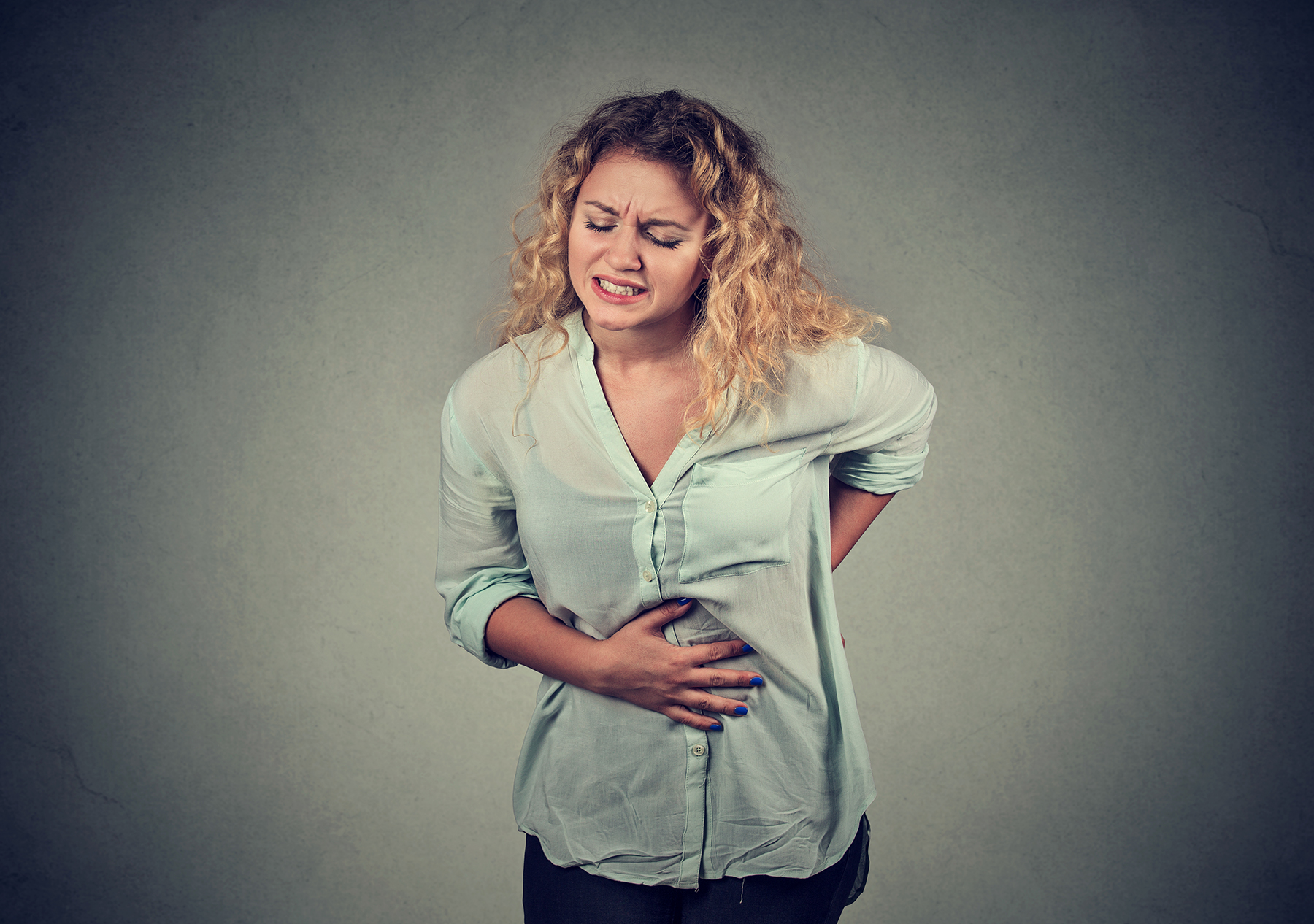What’s Causing My Abdominal Pain?

Cramps, stomach aches, stabbing pains – when your abdomen hurts, it can be hard to do anything other than curl up into a ball. Your mind goes through endless possibilities for your abdominal pain. Should you wait it out or go to the emergency room?
You are not alone. Abdominal pain was the most common reason for emergency room visits in 2014, according to a government report on emergency visit trends. However, just because so many people visited the ER doesn’t necessarily mean you should.
“Often, abdominal pain is related to excessive intestinal gas or food-related intolerances,” says Dr. Michelle Pearlman, a board-certified gastroenterologist with the University of Miami Health System. “Most of these symptoms go away on their own and are not a reason to worry.”
Where does it hurt?
If you are consulting Dr. Google for an answer, the chances are that “it’s probably just gas,” is not going to ease your worry.
There are many vital organs in your abdomen. Sometimes, the location of your pain may tell you a lot about what’s causing it, says Dr. Pearlman.
“There are some conditions that cause referred pain, which means that you may feel pain in a particular location, but the cause of the pain is coming from a different area,” she says. “For example, if you have inflammation or infection of your gallbladder, may people will experience pain in the right shoulder blade.”
Nevertheless, many times, the location of your pain can be a clue into what is wrong.
Mid-abdominal pain
Peptic ulcer disease: a condition that is caused by excess acid production, extended use of over the counter anti-inflammation medication like ibuprofen, or the bacteria h-pylori. Symptoms may include a burning pain or discomfort between your belly button and breastbone, says Dr. Pearlman.
Pancreatitis occurs when the pancreas becomes inflamed. The pancreas is located behind the stomach and is involved in hormone regulation, blood sugar, and production of digestive enzymes. The most common reasons for acute pancreatitis include tobacco, alcohol, gallstones, and medications.
According to Dr. Pearlman, acute pancreatitis typically causes:
- Fever
- Nausea and/or vomiting
- Upper abdominal pain that radiates into the back
- Pain worse after eating
Upper right abdominal pain
Hepatitis may be a result of an infection or inflammation of the liver which is located just under your rib cage on the right side of your abdomen, says Dr. Pearlman.
Symptoms of acute hepatitis include:
- Fever
- Nausea and/or vomiting
- Jaundice (yellow discoloration of eyes and skin)
- Dark urine and/or clay-colored stools
- Itchy skin
Gallstones are solid material composed of multiple compounds that can form in the gallbladder for various reasons. The gallbladder is located on the right side of your abdomen under the liver and next to the stomach. As you eat, your gallbladder empties bile through bile ducts (tubes) into your small intestines which aid in the digestion of nutrients. If you have gallstones, these stones can cause severe pain in the upper right side of your stomach as they pass through the bile duct, says Dr. Pearlman. This pain can last a few minutes to a few hours and typically occurs after eating fatty meals.
Cholecystitis is caused by inflammation or infection of the gallbladder. “Although you can get cholecystitis in the absence of them, cholecystitis often occurs when gallstones obstruct the bile duct,” says Dr. Pearlman. Common symptoms include:
- Fever and/or chills
- Nausea and/or vomiting
Lower abdomen
Appendicitis is caused by inflammation or infection of the appendix, located on the lower right side of the stomach. Appendicitis causes sudden pain that starts near the navel and then moves to the right lower quadrant, says Dr. Pearlman.
Symptoms of appendicitis may include:
- Severe pain
- Nausea and vomiting
- Fever
Colitis refers to inflammation or infection of the colon, which is caused by many reasons including acute bacterial or viral infections, poor blood supply to the colon or chronic inflammatory conditions like inflammatory bowel disease (IBD). According to Dr. Pearlman, symptoms of colitis often include lower abdominal pain, diarrhea with or without blood, and an urgency to have a bowel movement.
When should I worry about my stomach pain?
In an analysis published in the Annals of Translational Medicine of more than 5000 acute abdominal pain-related ER visits, only 7.7 percent of the cases were cholecystitis, 3.8 percent of the cases were appendicitis, and 2.6 percent were peptic ulcers.
If your pain keeps coming back or negatively impacts your life, speak with your doctor about it. “But, if you have these alarm signs – unintentional weight loss, vomiting blood, black stools, severe pain that doesn’t go away or an inability to keep down liquid, that’s when you should seek medical attention more urgently,” says Dr. Pearlman.
Natasha Bright is a contributing writer for UMiami Health News. You may have read her writing on the Huffington Post and Scary Mommy websites.
Tags: abdominal pain, appendicitis, Dr. Michelle Pearlman, gallstones, stomach cramps
